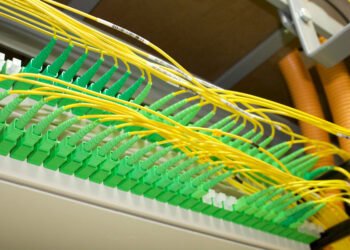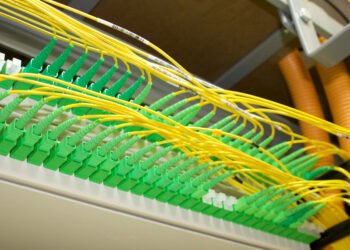Many people’s first exposure to the name “explorer” or “browser” was on their personal computers. Its cryptographic analog is known as the Blockchain Block Explorer or Blockchain Browser. However, many need to be made aware of the unique capabilities of such an explorer, which go far beyond simple record-keeping.
What Blockchain Browser Is: Knowing and Understanding its Background
A blockchain explorer, also known as a blockchain browser like Brave browser, is a website or software that provides access to the individual blocks that make up a blockchain. As such, it’s analogous to the directory structure of a computer’s Explorer.
Virtually every popular cryptocurrency has its own dedicated Block Explorer. The only tool available is the platform-specific Block Explorer. Because of this, it would be impossible, for instance, to view Ethereum transactions in a Bitcoin Explorer.
When and Why Would Someone Need to Use a Block Explorer?
Everyone can and should benefit from using such an Explorer. Newcomers and seasoned pros can learn great value concerning the specific blockchain. It’s now possible for users to monitor their financial dealings.
Miners rely on explorers because they provide crucial information about the most recently mined block, the transactions that block contains, the fees associated with those transactions, and much more. It is possible to make several inferences from this data, including the potential profit margin.
Why Not Find Out What Block Browser Can Do for You?
A growing blockchain’s transaction volume and network of nodes make the technology increasingly complex and challenging to comprehend. An Explorer can be a beacon of hope amid obscurity. Many customers use this explorer to track their most recent transactions and verify whether they have been paid. On the other hand, the Block Explorer can do a lot more.
1. Transparency in the Block and Transaction Feed
Through Block Explorer, users can view the blockchain in real-time and observe the addition of each new block as it occurs. In Explorer, you can view information such as the block height, the block hash, the contained transactions, the block output in tokens, the transaction fees, and the name of the miner or mining pool, in addition to the current time.
Also, customers can investigate and keep track of the activities going on within each block by using Explorer.
2. Accountability in Information through the History of a Specific Address
The user can view all of the purchases that have been done with a certain wallet id. Providing, of course, that one has access to the general address. It is simple to view both the current balance and all previous transactions that have been made.
- Determining whether or not a transaction has been delivered to the recipient that it was intended for. It is the equivalent of having some public evidence that you have sent some cryptocurrency to the individual in question. Owners can monitor the balances of their wallets.
- Explorers can assist in explaining what is wrong with transactions that still need to be processed or confirmed, as well as the phases of confirmation.
- Knowing the current price of a transaction or gas might be helpful to a user, who can then use this information to better plan their expenditure on gas for future transactions.
3. Quantitative analysis in the Blockchain’s Data
It is possible to display a wide variety of data, like the most costly trade of the day, the total number of blocks created or tied to a certain day, and much more. Some of the more sophisticated explorers will reveal the number of orphaned blocks in the blockchain as well as the number of double spends that have occurred in the most recent 10 minutes.
4. Mempool and Genesis Blockchain
Mempool is a pool that stores unconfirmed transactions until they may be used to construct blocks. Blocks are created from Mempool. The Explorer also has the capability of displaying these. It is usual practice to publish more characteristics about some service providers in order to accomplish this objective. These additional details can include the transaction rates, costs, data size, and global distribution of the service provider in question.
What is a Genesis Block?
The initial block that is added to a blockchain is referred to as the Genesis block. The information regarding this block can be accessed directly in addition to the Block Explorer. There is a record of everything, including the time, the date, and the miner who made the discovery.
5. Additional Features that Blockchain Browser Offers
While blockchain wallets can give a variety of information, users can only see data that pertains to the keys the wallet controls. A blockchain explorer can examine the history of all the wallets on that blockchain and the transactions they’ve processed.
- When deciding whether or not to allow additional computing resources for future mining, one factor to consider is whether or not it is known whether or not a specific group is the one that mined a particular transaction. If this information is known, the decision to allot additional resources is easier.
- Users developing their wallets might find it helpful to test the functionality of their wallets by sending and receiving tokens and storing them.
- Explorers, when used in conjunction with other programs such as nodes, can be used in data and information verification. This is something that can be done, for example, to ensure that all of the other tools are functioning correctly.
Final Thoughts: A Blockchain Browser Handles Everything
Because of the importance of transaction openness and the necessity to examine and understand precise data about transactions, blockchain explorers were developed. Although the first Bitcoin explorer launched in November 2020, real-time statistics pages had been up for some time before that.
Blockchain transaction histories, wallet balances, and confirmation of a transaction’s confirmation status may all be viewed with the help of explorers. Additionally, we saw how a blockchain explorer could be used to determine things like block height, orphaned blocks, genesis blocks, and the mining pools that produce these blocks.






















































